
Privacy statement: Your privacy is very important to Us. Our company promises not to disclose your personal information to any external company with out your explicit permission.
We don't just think of a car as a means of transportation, but a good friend. As consumers demand more and more automotive functions and performance, cars are shifting toward intelligence, and this change is also the transition from mechanical systems to electronic systems. At present, the proportion of original electrical and electronic products used in automobiles to total vehicle costs has increased from 25% to 40%. In the future, this proportion will definitely increase. Statistics show that the market is showing an annual growth rate of 7%. Take the telematics system as an example, its market will reach 20 billion US dollars.
What is automotive electronics?Automotive electronics can be divided into visible and non-visible parts, in-vehicle devices are visible parts and automotive electronic controllers are non-visible parts. From the point of view of use, it can be divided into automotive electronics, power control systems, safety control systems, body control systems, driving control systems, and information systems.
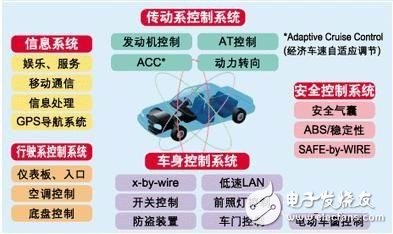
Power control system: including engine management control system, power steering, AT control and ACC
Safety control system: including airbags, ABS/ASR and SAFE-BY-WIRE
Body control system: including body control of switch control, lighting control, anti-theft system, door lock control, window control, wiper, etc.
Travel control system: including instrumentation, air conditioning and chassis control system
Information system: including entertainment, mobile communications, GPS navigation and information processing systems
As we all know, the car consists of four parts, namely the body, chassis, engine, electronic system, and the car electronics are basically contained in the body, chassis and engine. From the comfort, safety and entertainment of the car, all aspects of the car need to adjust the role of automotive electronics. Among the cars of different grades and technologies, the proportion of automotive electronics in the cost of complete vehicles is as follows.

In general, automotive electronics is a combination of electronic technology, automotive technology, information technology, computer technology and network technology, including the basic technology layer, electronic control system layer and human-car environment interaction layer, and has experienced discrete electronic elements. There are three development stages of device control, component independent control, and intelligent, networked integrated control applications.
In the wave of global semiconductor acquisitions, automotive electronics companies have become the most sought-after toon. In 2016, there were many acquisitions related to automotive electronics. NavInfo's 3.875 billion yuan acquired Jiefa Technology to fill the key link of unmanned driving. Qualcomm's more than 30 billion US dollars to acquire Dutch NXP Semiconductors became the biggest acquisition. Samsung acquired Kazakhstan. Man is also interested in automotive electronics. Although Siemens' acquisition of Mentor is stupid, it is analyzed that it has a far-reaching relationship with automotive electronics.
Today, the rapid development of the automotive electronics industry, what are the key words of automotive electronics technology?
Keyword 1: AutopilotAutomated driving is sweeping the global auto industry with strong momentum. Many automakers, auto parts companies, IT communication companies and other forces are involved in autonomous driving and participate in R&D and manufacturing. Unmanned driving will solve the problems in urban development such as congestion and parking difficulties. Unmanned technology can also be used in logistics, shared travel and other fields, with high social and economic benefits.
Unmanned driving is not simply a competition between enterprises. Now it has risen to the level of national strategy. The "national competition" for the leadership of the driverless industry has been fully opened. Yes, this is a battle that is related to national competitiveness. From sensor supply to software technology integration to hardware creation, autonomous driving is becoming a big cake in the automotive industry chain.
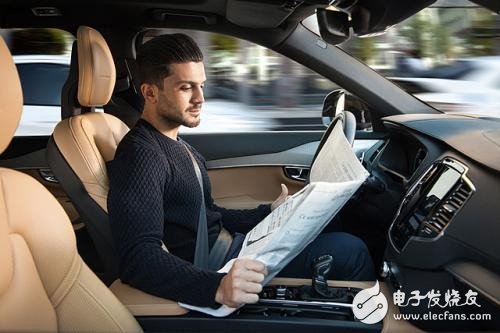
The US Department of Transportation released the first draft of a driverless car regulation issued by a sovereign state on the earth; the Japanese government’s strategic goal is to achieve complete unmanned driving at the L4 level at the 2020 Tokyo Olympics, and the Japanese government hopes to rely on The strategic opportunity of “driving people” has regained its leading position in the Asian region; the Chinese government has released a roadmap for driverless technology in Shanghai, and plans to achieve 15% of new cars with unmanned capabilities by 2025. The German Ministry of Transport, Bavaria and Audi jointly launched the driverless program.
Since Tesla’s driverless car accident, unmanned driving has stood on the cusp of the cusp. Can drones really replace people’s driving? I believe that this is definitely inevitable, but it takes time to wait for the technology to mature. Now all companies that develop unmanned vehicles are actively promoting the development of AI systems. Yes, AI will make cars learn, think, and judge.
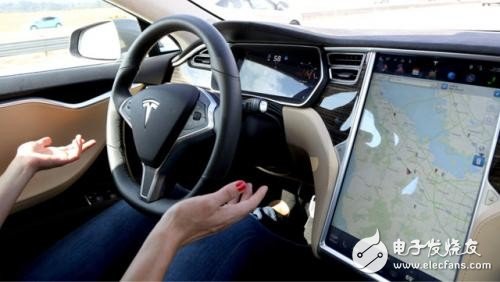
In 2020, many people in the industry see it as a watershed in the development of autonomous driving. In 2020, the automatic driving technology will be more mature and perfect, and some highly self-driving vehicles will appear. According to Morgan Stanley, by 2030, the size of the driverless industry will reach 6 trillion US dollars.
Keyword 2: lithium batteryWith the rapid development of new energy vehicles, the demand for power batteries is driven by the market. The power batteries are basically divided into two types: batteries (mainly lithium-ion batteries) and fuel cells, but the fuel cell research and development costs and maintenance costs are too high (fuel cells). The maintenance cost is about three to four times that of the battery. It is not very suitable for the development of electric vehicles at this stage. In the face of the upcoming "blowout" of new energy vehicles, lithium batteries seem to be a magic weapon to win.
At present, lithium battery companies are facing the predicament of insufficient raw materials and rising costs. Electric lithium batteries have fatal problems such as slow charging, short cruising range and short life.

Lithium batteries have an average service life of 8 years on ordinary electronic products, while the service life on electric vehicles is only 3-5 years. When the battery capacity on electric vehicles is reduced to less than 80%, the cruising range of electric vehicles will be Significantly reduced, when the battery capacity is reduced to less than 70%, the battery must be replaced, but the battery portion accounts for about 40% of the total cost of the car. Replacing the battery is a big expense. Why is the lithium battery of an electric car so "weak"? The impact of the working environment and large-scale charge and discharge lead to the problem of short service life, and this is also an issue that cannot be changed.
Thanks to strong market demand, China's lithium battery industry has entered the first camp in the world, initially forming four major industrial areas in the Pearl River Delta, Yangtze River Delta, Beijing-Tianjin-Hebei and Central Plains. Qinghai, which accounts for 80% of the country's reserves, is trying to build another lithium industry base with national influence, relying on abundant lithium resources to take a share in the lithium battery market.
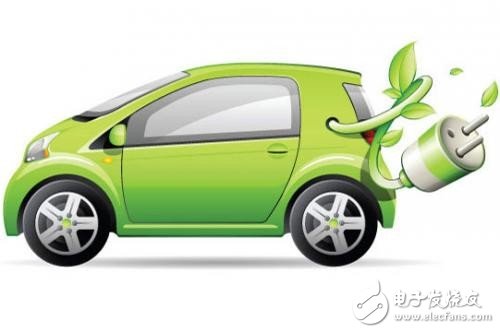
Although it is part of the first camp, in terms of technical level, there are still differences between China and the top companies in Korea and Japan. For example, there is still a big gap in product consistency.
For the lithium battery industry, improving battery recycling and reducing environmental pollution is an important factor in ensuring sustainable development of the industry. However, the recycling cost of used power batteries is high, and the level of recycling of enterprises is not high. This is the pain point of China's lithium battery industry and one of the major gaps with developed countries.
Keyword three: vehicle information systemThe in-vehicle infotainment system is an intelligent system with various interaction modes and powerful graphics. In recent years, the original closed and conservative vehicle system has ushered in a new wave of competition, and the market structure and product form will inevitably produce a major change. Under the condition of comfort, entertainment and information, the in-vehicle infotainment system gradually develops in the direction of performance integration and increasing proportion. Previously, the single performance gradually expanded into multimedia information interaction of image entertainment, car navigation and wireless communication. equipment.

As an important node of vehicle electrical and network, in-vehicle infotainment system plays an important role in displaying and feedbacking vehicle status and information. In the high-end car market, how to help yourself to have a place through the unique in-vehicle system design has become a problem for major manufacturers. Samsung’s acquisition of Harman is obviously the first step.
The infotainment system functions include human-computer interaction, audio/video signals, wireless signals, hard-wire signals, and bus signals.
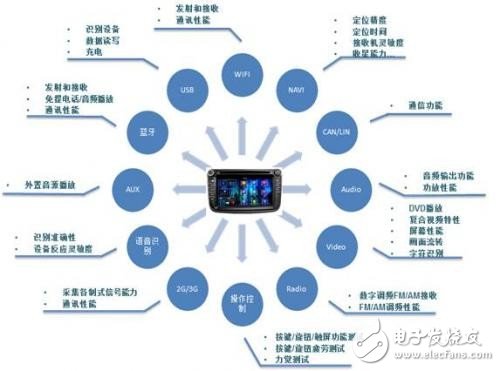
The recognized path for smart car development technology and industry development is advanced assisted driving (ADAS), partial autopilot, highly automated driving and fully unmanned, smart car.
The Advanced Driver Assistance System (ADAS) uses a variety of sensors installed in the car to sense the surrounding environment, collect data, identify, detect and track static and dynamic objects, and combine them. Navigator map data, system calculation and analysis, so that the driver can detect the dangers that may occur in advance, and effectively increase the comfort and safety of driving.
The design of ADAS is not to control the vehicle, but to alert the driver to potential hazards and improve driving safety. These active safety technologies are implemented using advanced driver assistance systems such as radar, camera and lidar sensors. For example, lane departure warning systems use CMOS camera sensors, night vision systems use infrared sensors, and adaptive cruise control systems (ACC) are commonly used. Radar technology and parking assistance systems use ultrasonic technology. A typical ADAS application integrates many technologies, as shown in the following figure.
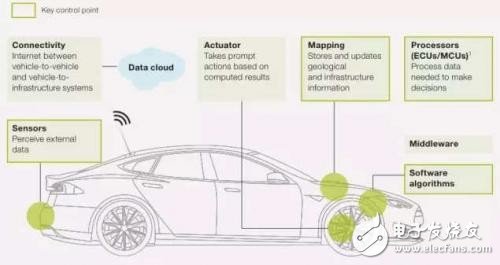
There are two trends in the future of ADAS:
From early warning systems to intervention systems
At present, ADAS's main responsibility is to remind drivers in critical situations, and in the future will develop into the intervention system, that is, control the car under limited conditions. For example, the camera system will develop from the lane departure warning system to the lane control system.
Active safety combined with passive safety systems
The passive safety system in the collision is independent of the active safety ADAS, and the future will have better correlation and combination points, such as when the airborne lidar, radar or video sensor detects the inevitable collision. Prepare the airbag.
As far as the current situation is concerned, the challenges faced by ADAS mainly come from the four aspects of processors, sensors, software algorithms and maps.
The requirements of ECU and MCU in ADAS system are multi-core architecture, higher frequency and lower power consumption processor; ADAS system needs to use some equipment to obtain surrounding environment information in real time. Radar and Lidar are better identification sensors, but they all have prices. Expensive; algorithms running on the ECU and MCU need to use the real-time peripheral information acquired by the sensor to determine how the car should operate; where the GPS fails, an accurate map system can help avoid accidents.

Intel, NVIDIA, Panasonic, Qualcomm, Samsung and Sony are actively deploying ADAS-related sensors, ECUs, MCUs, operating systems, and chip systems. For the increase in ADAS during 2015-2020, the industry's general forecast is a growth rate of at least 10%.
Keyword five: electronic body stability systemThe electronic body stabilization system, Bosch called it ESP, BMW called it DSC, commonly known as ESC, its role is to improve the stability of the car during driving, or to reduce the risk of loss of control. The Vehicle Electronic Stability System (ESP) is a milestone in vehicle active safety control technology following the vehicle anti-lock braking system (ABS) and traction control system (TCS).
The body stability system uses the sensors on the car to “feel” the vehicle. Usually, four wheel speed sensors monitor the speed of each wheel. One steering wheel angle sensor detects the driver's direction and uses the body angle sensor. Monitor the deflection of the body. In addition to the sensor, a computer is needed to monitor the condition of the vehicle at any time to make the correct command to the sensor.

In theory, the electronic body stability system can play a good role in any situation, but ESP is only an auxiliary function, subject to the system's reaction speed and tire limit. When the speed is too fast or the control is serious, the body stability system will be weak. Back to the days. However, the current development of the technology has become more and more mature, even on ice and snow, the effect and effect are very good. Because of this, many countries and regions have now adopted the system as a mandatory standard for automobiles.
Keyword six: car networkingThe Internet of Vehicles is not a new theme. Starting in 2010, it seems that any product or business related to automotive and communications can be labeled as the concept of “Internet of Vehicles”. What exactly is the Internet of Vehicles and how should it be defined?
The original car networking applications originated from electronic sensing devices, in-car entertainment systems, vehicle management, traffic management and other applications. Today it is the general term for using modern communication technology, combined with relevant vehicle operation and driving data, covering all business models related to car purchase, driving, riding, maintenance, maintenance, social, and transaction. The ultimate goal is to improve the driving experience. Improve vehicle efficiency and reduce vehicle cost. The history of the car network is interpreted as shown below.

Generally speaking, the map is the foundation of the Internet of Vehicles. The in-vehicle system and intelligent hardware are the bridges that connect the car to the network. The cloud service is the guarantee of all functions. The content and the car manufacturer are the carriers of the function landing, while the driver is the car. The ultimate beneficiaries and responders to the network.
Nowadays, the upgrade of communication technology will give the true meaning of the Internet of Vehicles. The development of the automotive aftermarket and the rise of new energy vehicles will promote the development of the Internet of Vehicles industry.
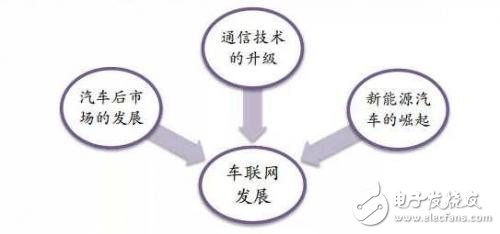
Some analysts believe that the future of car networking will present the following development trends: on the one hand, the way of voice input and car terminal interaction is still the trend of car terminal development; on the other hand, navigation technology will be more intuitive and easy to use, traditional static navigation will Gradually replaced by dynamic navigation, 3D navigation, real-world navigation and online methods will become the future development direction.
The Internet of Vehicles is part of the Internet of Things connected to the Internet of Everything. Traditional semiconductor companies NXP, Infineon, Renesas, STMicroelectronics, and Texas Instruments have been deployed here. New technology companies such as Google, Baidu, Didi, and Uber are also trying to use their own software systems such as artificial intelligence and algorithms. Advantages Enter this market and launch a total solution that integrates software and hardware systems. In the future, this cake is very big, and there is a problem of how to eat it.
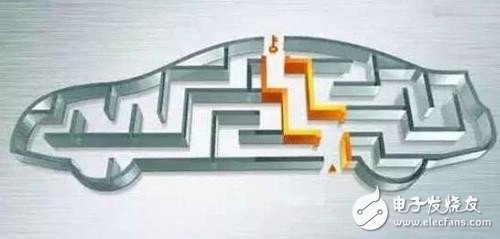
Cars are becoming more and more important for life, and future cars will be moving towards a more intelligent and diversified direction. Whether it is Tesla's ambitions or Apple's out-of-office vehicles, it is certain that the output value of auto electronic bicycles will continue to increase. Although the core technologies and markets of global automotive electronics products are mainly concentrated in Europe, the United States, and Japan, with the shift of the automobile manufacturing industry to emerging countries and regions, China, India, and South America will become emerging markets for automotive electronics. development of.
September 19, 2022
September 09, 2022
September 08, 2022
September 09, 2022
November 03, 2022
이 업체에게 이메일로 보내기
September 19, 2022
September 09, 2022
September 08, 2022
September 09, 2022
November 03, 2022

Privacy statement: Your privacy is very important to Us. Our company promises not to disclose your personal information to any external company with out your explicit permission.

Fill in more information so that we can get in touch with you faster
Privacy statement: Your privacy is very important to Us. Our company promises not to disclose your personal information to any external company with out your explicit permission.